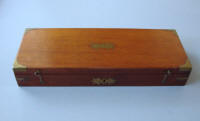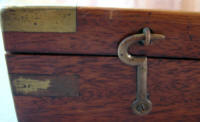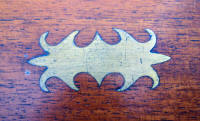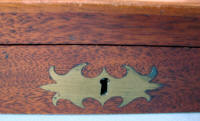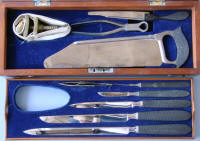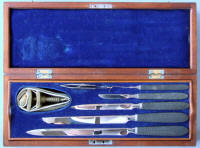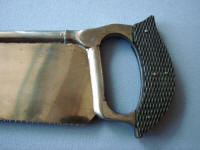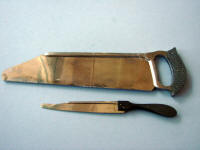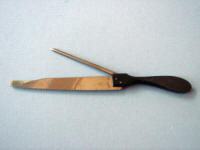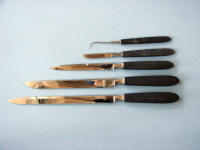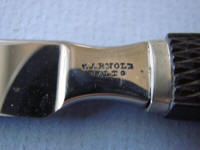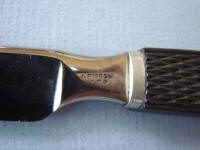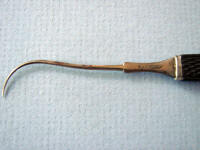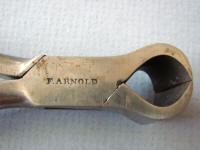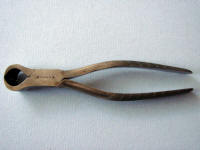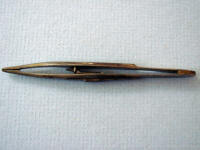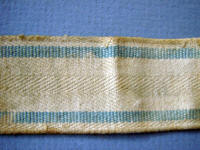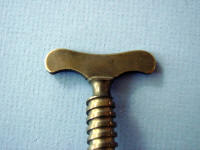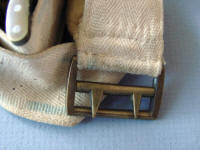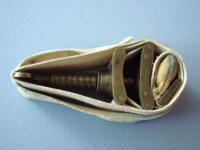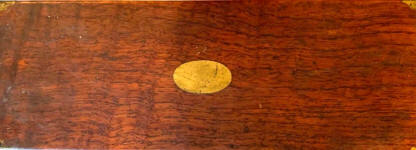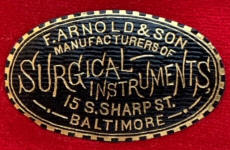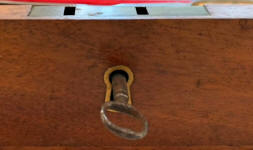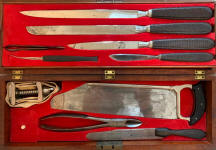c. 1860s Amputation Set by Francis Arnold, Baltimorec. 1870s Amputation Set by Francis Arnold & Son, Baltimore These two amputation sets by a minor, but highly respected, instrument maker was located in Baltimore, Maryland prior to and during and after the Civil War. According to Edmonson: "At mid-century William Daily and Francis Arnold rose in importance, becoming the premier instrument makers of Baltimore around the time of the Civil War and thereafter." "In 1807 the surgeon John Beale Davidge established the Medical College of Baltimore, the fifth medical school in the country, which became the Medical Department of the University of Maryland in 1812. The Baltimore College of Dentistry, the first school of its kind, originated in 1840 and the next year conferred for the first time in America the degree of Doctor of Dental Surgery."
In the pre-Civil War example there are two instruments, which help date this set to late 1850's -1860 and the eve of the Civil War: the Satterlee bone forceps as well as the small 'D' style handled saw. A similar 'D' saw, by Reinhardt is dated 1860 in Edmonson, page 297, and numerous Tiemann sets, after 1858, show up with the 'D' style saw prior to the War, but generally not after the start of the War. Satterlee's design bone forceps are common in Army Hospital Department sets from Hernstein and Kolbe' during the Civil War, whereas most other sets used Liston's design forceps for large bone forceps. All instruments fit into the original slots to perfection, proving none were replacements. This set came from a family who has owned it since the Civil War period and has not been circulated among dealers or other collectors.
The amputation knives are of the Civil War straight blade style, but the handles are the large 'beefy' style favored during the 1840's and 50's. The ferrules on the knives are not forged as part of the blade, but appear to be a separate metal piece and unlike any others this collector has observed. All knife and saw handles are cross-checked. The cross-checking on the handles of the Satterlee bone forceps are typical after the late 1850's. The catch on the tissue forceps is the locking style more common during the Civil War. The tourniquet is unusually large and the handle is more typical of English or French designs on the 'T'. The strap is faded, but the design is obvious in the photo and typical of pre-War styles. The strap prongs are typical of the earlier cast brass type rather than those seen during the Civil War, which generally have cast and blued iron prongs.
A characteristic of the mahogany wood case (16 x 6 x 2.5 in.) which pre-dates the Civil War is the inlaid brass key escutcheon and the ornate brass name plate. Both of which are more likely seen in the 1830-50's along with the English style swinging latches on the front of the case, which we do not see after the War.
Post-Civil War F. Arnold & Son Example
|
